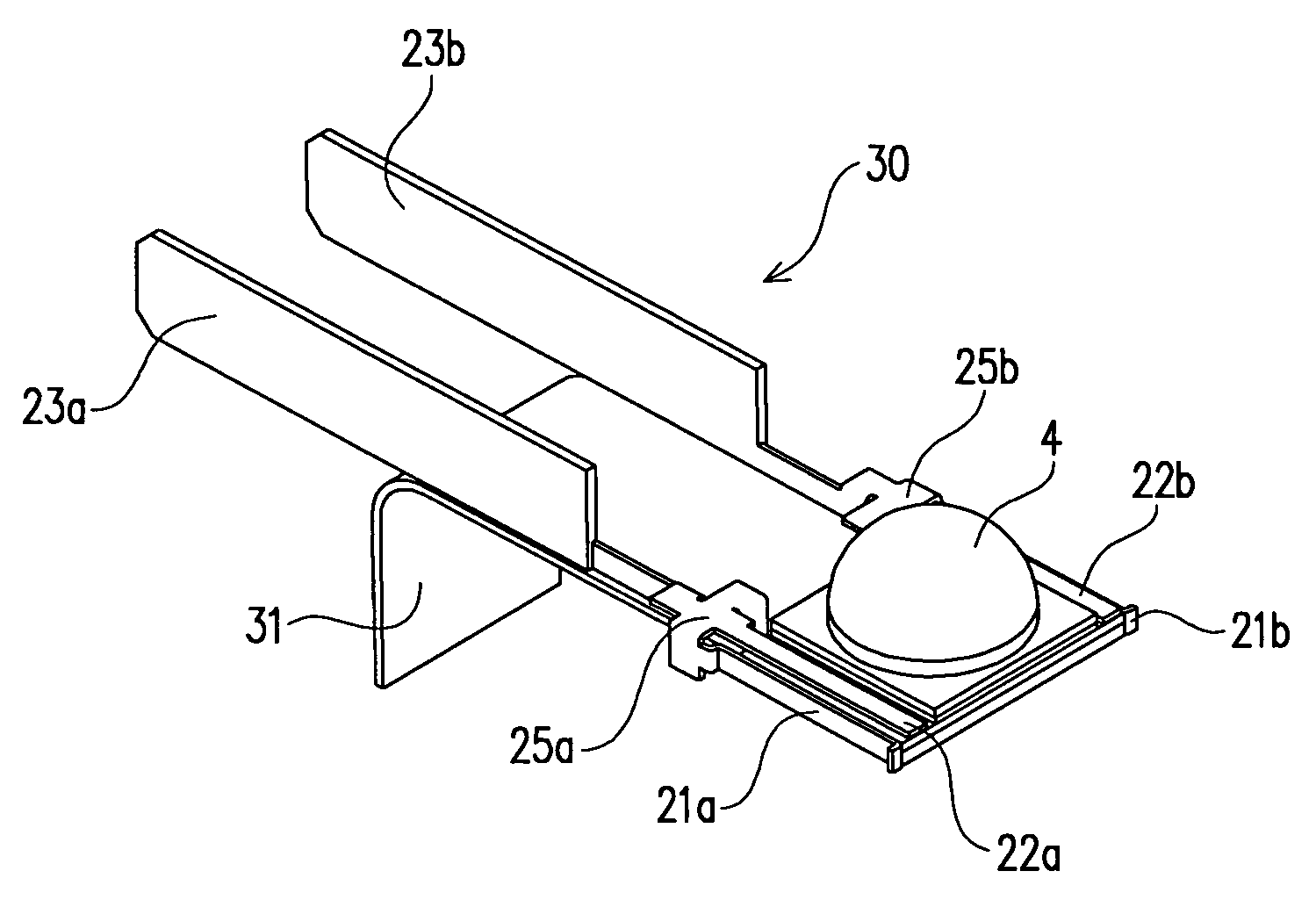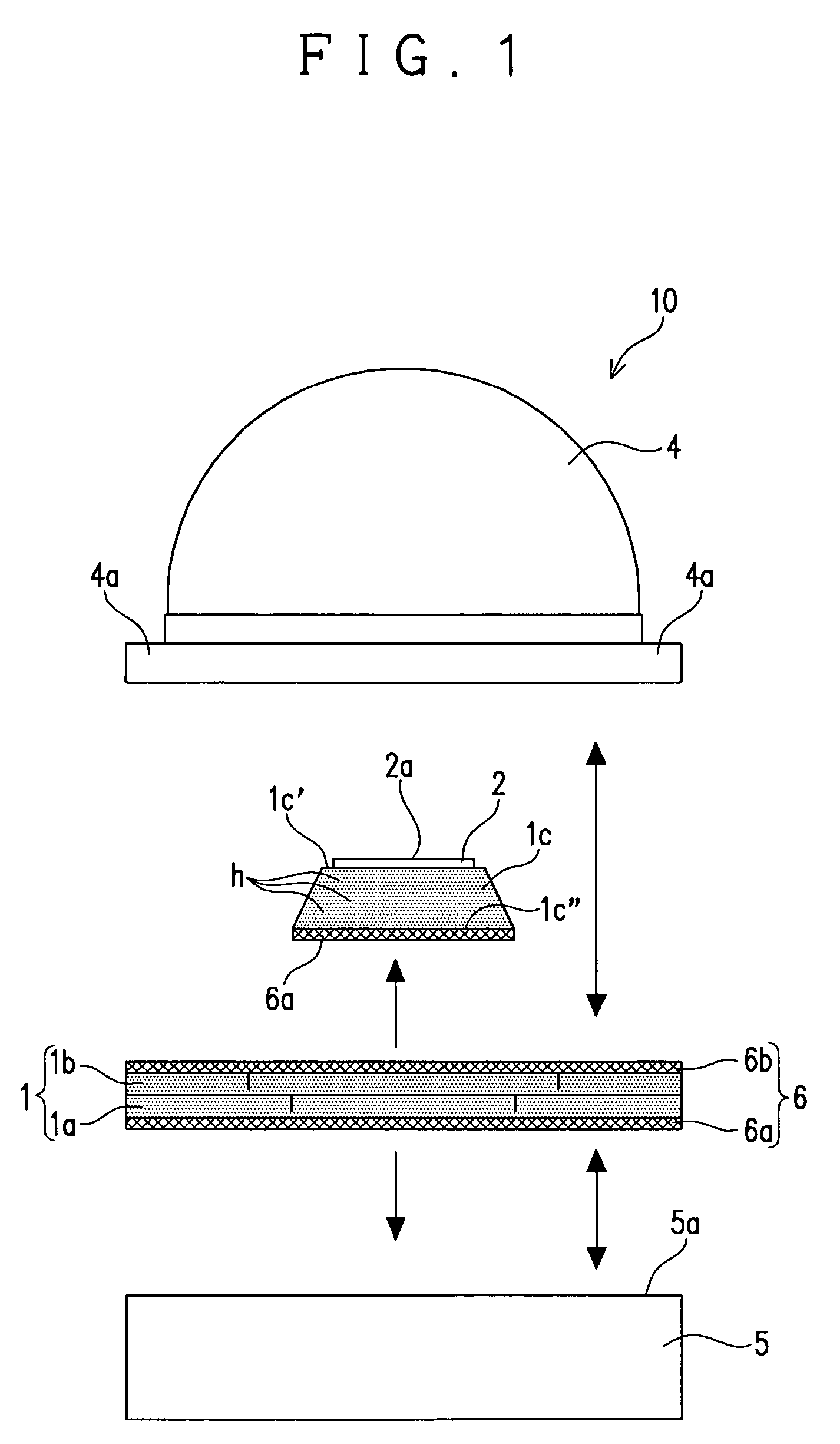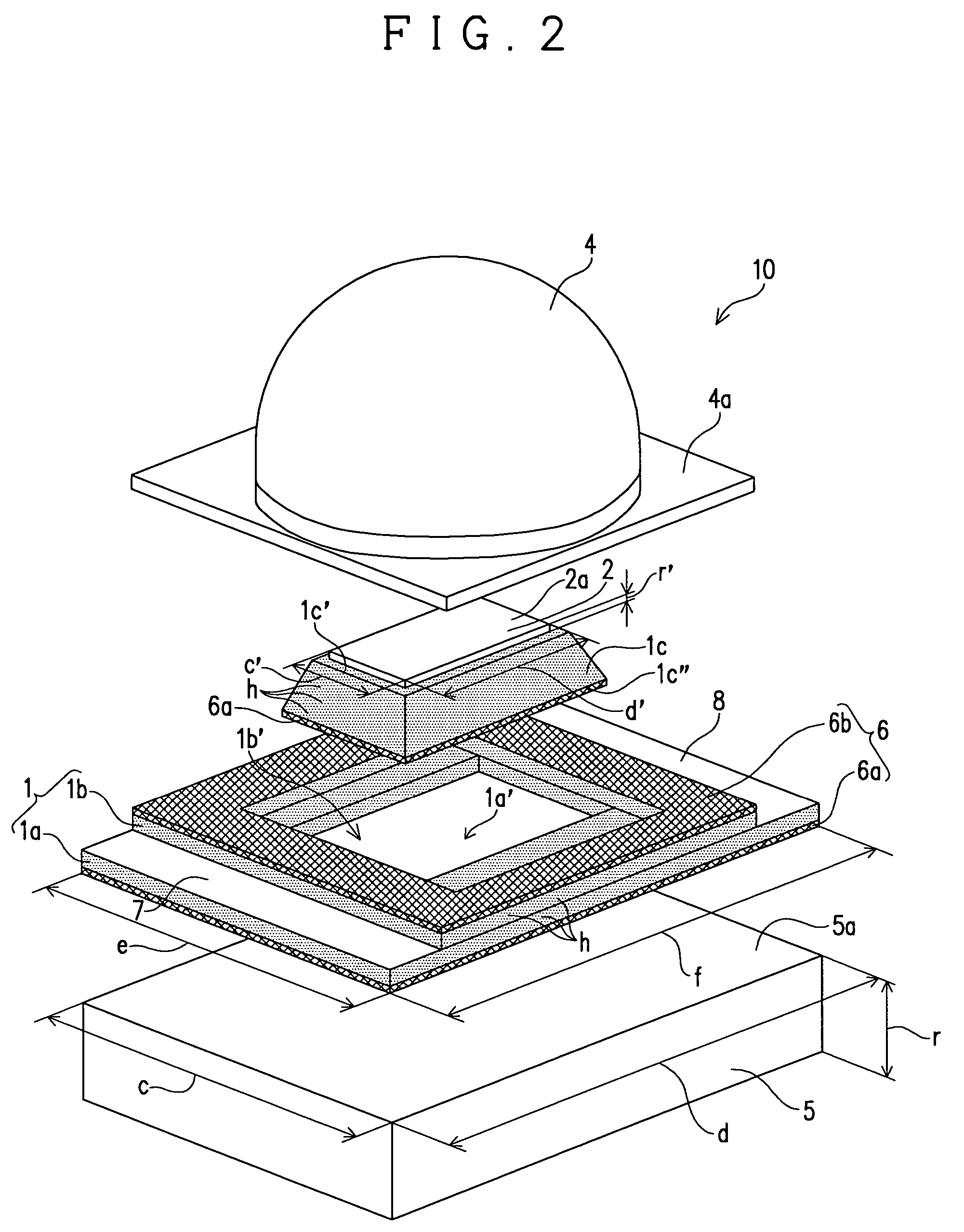Light emitting device, method of manufacturing the same and lighting equipment
a technology manufacturing methods, which is applied in the direction of semiconductor devices for light sources, lighting and heating apparatus, transportation and packaging, etc., can solve the problems of warping or cracking of ceramic parts, and achieve the effect of preventing unintentional rolling or moving of light emitting devices, easy attachment or removal, and improved heat release capability of lighting equipmen
- Summary
- Abstract
- Description
- Claims
- Application Information
AI Technical Summary
Benefits of technology
Problems solved by technology
Method used
Image
Examples
example 1
[0133]Now, the description will be made for the submount 1c of the LED 10 with reference to the relationship between the slant angle of the submount 1c of the LED 10, the temperature rise of the LED 10 and the contacting area of the bottom surface 1c″ of the submount 1c to the surface 5a of the metallic part 5 made of Cu (hereinafter referred to a Cu part), which relationship was studied by using the LED 10 of FIGS. 1–3. As illustrated in FIG. 4A, the slant angle of the submount 1c is an angle (θ in the Figure) formed by a plane R extending vertically from each side of the top surface 1c′ and a corresponding slanting surface S of the submount 1c.
[0134]Herein, the material of the ceramic part 1 is AlN and the size (e×f) is 9 mm×12 mm. The size c′×d′ of the light emitting element 2 is 1 mm×2 mm and the height r′ is 100 μm. The size of the top surface 1c′ of the submount 1c is larger than the light emitting element 2 with the width of a portion i=0.2 mm outwardly extending from the pe...
example 2
[0136]Now, the description will be made for the relationship between the size c×d of the Cu part 5 (or, the package area) of the LED 10 and the difference in temperature between the light emitting element 2 and the Cu part [(temperature Tj of the light emitting element 2)−(temperature Tcu-Plate of the Cu part 5)], which relationship was studied by using the LED 10 of FIGS. 1–3.
[0137]Herein, the same conditions, elements and the like as those of the first example are applied to this example, except for the light emitting element 2, the slant angle θ of the submount 1c, and the sizes of the Cu part 5 and the ceramic part 1. As illustrated in FIG. 4B, the light emitting element 2 is comprised of eight light emitting chips arranged (in a 2×4 pattern) each having a size c″×d″=1 mm×1 mm and height r′=100 μm. The slant angle θ of the submount 1c is 20°. As the package area, the size c×d of the Cu part 5 and the size e×f of the ceramic part 1 are changed in the manner: 5 mm×5 mm (□5 mm)=25 ...
first embodiment
(First Embodiment of the Lighting Equipment)
[0142]FIG. 7 is a perspective view illustrating an appearance of a light emitting device 100 to be used in the lighting equipment of the first embodiment of the present invention. The light emitting device 100 manufactured by the method of the present invention as described above is used. The light emitting device 100 of this embodiment has a positive power supply part 7 and a negative power supply part 8, each extending to not only the top surface of the first plate section 1a but also a corresponding side surface.
[0143]FIG. 8 is a perspective model view of terminals 20a, 20b of this embodiment. The terminals 20a, 20b made of a conductive material is comprised of at least a pair of positive and negative terminals for power supply to the light emitting device 100, which respectively contact the positive power supply part 7 and the negative power supply part 8. The terminals 20a, 20b include at least first terminal sections 21a, 21b made up...
PUM
| Property | Measurement | Unit |
|---|---|---|
| temperature | aaaaa | aaaaa |
| vacuum pressure | aaaaa | aaaaa |
| porosity | aaaaa | aaaaa |
Abstract
Description
Claims
Application Information
 Login to View More
Login to View More - R&D
- Intellectual Property
- Life Sciences
- Materials
- Tech Scout
- Unparalleled Data Quality
- Higher Quality Content
- 60% Fewer Hallucinations
Browse by: Latest US Patents, China's latest patents, Technical Efficacy Thesaurus, Application Domain, Technology Topic, Popular Technical Reports.
© 2025 PatSnap. All rights reserved.Legal|Privacy policy|Modern Slavery Act Transparency Statement|Sitemap|About US| Contact US: help@patsnap.com



